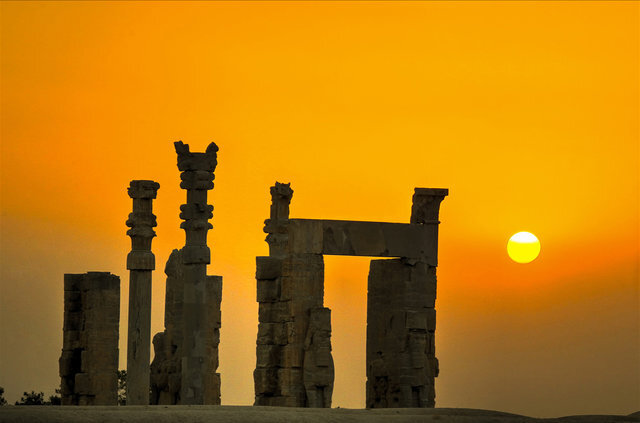Conference to highlight role of local community in sustaining Persepolis

TEHRAN - A conference honoring the significant contributions of the local community in the sustainable development of Persepolis is set to take place in Marvdasht county, where the UNESCO-designated site is located.
The event, titled “The Role of the Local Community in the Sustainable Development of the Persepolis World Heritage site,” is scheduled for September 5, at the Persepolis complex, ISNA reported.
Alireza Askari Chavardi, the director of the Persepolis World Heritage site, emphasized that the primary aim of the conference is to acknowledge and appreciate the efforts of the educated people of Marvdasht county, particularly in providing water services and maintaining the cleanliness and preservation of the gardens surrounding Persepolis.
He highlighted the crucial role played by the local people in supporting and safeguarding this iconic historical site.
Askari Chavardi outlined the conference’s approach, which focuses on strengthening the connection between people and cultural heritage, and raising awareness about the reciprocal relationship between them within the framework of sustainable cultural, environmental, and social development.
“Sustainable development is about meeting the needs of the present without compromising the resources and potential of future generations,” the official explained. “This concept is vital to ensuring the longevity of both cultural heritage and community well-being.”
Askari Chavardi further elaborated on the challenges faced by heritage sites like Persepolis, especially in the context of climate change, resource scarcity, and environmental threats. He noted that protective objectives, such as those promoted by World Heritage conventions, must become more tangible and linked to economic issues on a broader scale. “Social and environmental values and needs are integral to the concept of sustainable development,” he added.
Elsewhere in his remarks, the official stressed the importance of reinforcing Persepolis’s role in guaranteeing sustainable development in the Marvdasht Plain. He pointed out that achieving this goal requires attention to three key aspects of sustainable development: environmental sustainability, socio-economic development, and the reinforcement of the community’s spiritual and cultural values.
Moreover, he talked about a goal to eradicate poverty and promote economic growth. “The eradication of poverty is a fundamental requirement for sustainable development.”
“We must be able to create forms of economic development that are comprehensive, equitable, productive, and fair. This means providing suitable employment and income-generating activities for everyone while fully respecting the enduring values of the UNESCO-registered Persepolis,” he explained.
Persepolis, aka Takht-e Jamshid in Persian, whose magnificent ruins rest at the foot of Kuh-e Rahmat (Mountain of Mercy), was the ceremonial capital of the Achaemenid Empire. The highly impressive site is situated 60 kilometers northeast of the city of Shiraz.
It is one of the archaeological sites which have no equivalent, considering its unique architecture, urban planning, construction technology, and art. Majestic approaches, monumental stairways, throne and reception rooms, and dependencies have made that 13-ha ensemble one of the world’s greatest archaeological sites.
Construction of its immense terrace was begun about 518 BC by Darius the Great, the Achaemenid Empire’s king. On this terrace, successive kings erected a series of architecturally stunning palatial buildings, among them the massive Apadana palace and the Throne Hall (“Hundred-Column Hall”).
The terrace is a grandiose architectural creation, with its double flight of access stairs, walls covered by sculpted friezes at various levels, monumental gateways, gigantic sculpted winged bulls, and remains of large halls.
By carefully engineering lighter roofs and using wooden lintels, the Achaemenid architects were able to use a minimal number of astonishingly slender columns to support open-area roofs. Columns were topped with elaborate capitals; typical was the double-bull capital where, resting on double volutes, the forequarters of two kneeling bulls, placed back-to-back, extended their coupled necks and their twin heads directly under the intersections of the beams of the ceiling.
Narratives say that Persepolis was burnt by Alexander the Great in 330 BC, apparently as revenge against the Persians, because it seems the Persian King Xerxes had burnt the Greek City of Athens around 150 years earlier.
AM
